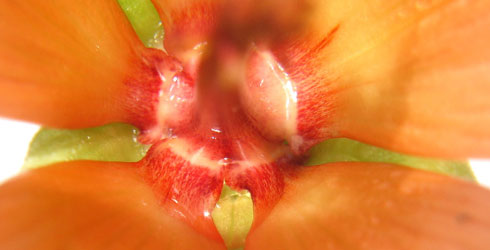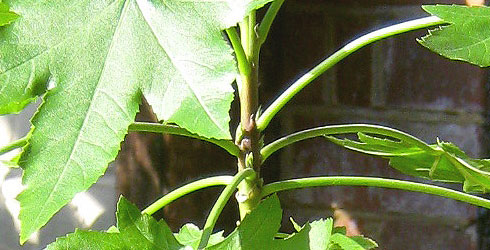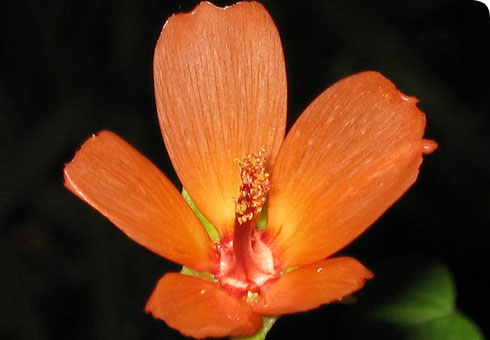Navaea phoenicea (Tenerife tree mallow, Higuereta)
The Tenerife tree mallow, locally known as the Higuereta is a small tree or large shrub that is endemic to the Canary Islands.
Étienne Pierre Ventenat first described this beautiful rarity as Lavatera phoenicea in 1803, in his book Le Jardin de la Malmaison. Empress Joséphine de Beauharnais, Napoleon Bonaparte’s first wife, asked him to write this account of the rare plants growing in the gardens of her home, Château de Malmaison.
Navaea phoenicea is the only species of tree mallow that requires birds to pollinate its flowers in order to reproduce. It relies on some spectacular adaptations to attract them - its showy, salmon-orange coloured petals have red bases to signal special nectaries which produce 80ml of nectar per flower each day.
This species differs from all others in Lavatera in additionally being summer-deciduous, and bearing fruits divided into very numerous, horned mericarps.
In 1836, Webb and Berthelot published a book on the natural history of the Canary Islands, and segregated Lavatera phoenicea to its own genus Navaea, which they named in honour of Don Alonso de Nava y Grimón, Marqués Villanueva del Prado who was the founder of the Orotava Botanic Garden. It was from here that this species was first made available to other gardens (such as Malmaison outside Paris).
Species detail
-

Taxonomy
Navaea phoenicea was originally classified as a Lavatera, but it is morphologically and genetically distinct. Find out more.
-

Distribution and ecology
This species lives on rocky cliffs in the northern parts of Tenerife, where it forms part of a shrub-land band. Find out more.
-

Biology
This plant has very showy flowers that help attract birds which feed on nectar and carry pollen to other flowers. Find out which birds like to visit.
-

Conservation
This species is rare and threatened in non-protected areas. Find out what plans are afoot to preserve it.
-

References
Get reference material for Navaea phoenicea.
Images

Navaea phoenicea flower with stigmas.
© Christopher J S Davis
Navaea phoenicea stamineal column.
© Christopher J S Davis
Navaea phoenicea floral nectaries.
© Christopher J S Davis
Navaea phoenicea young tree in leaf.
© Christopher J S DavisAbout the author
Christopher Davis
Curatorial Assistant, Botany Collections Team, Botany Department.
A word from the author
"I want people to know how this beautiful and ancient mallow and its habitat are being studied and protected. I am involved in research into improved seed germination, early flowering and pollen self-incompatibility."
Toolbox
Glossary
Indehiscent
Does not split open at maturity.
Mericarps
Sections of a divided fruit.
Obovate-lanceolate
Inverted oval, tapering at the base.
Thermophilous
Growing at high temperatures.
